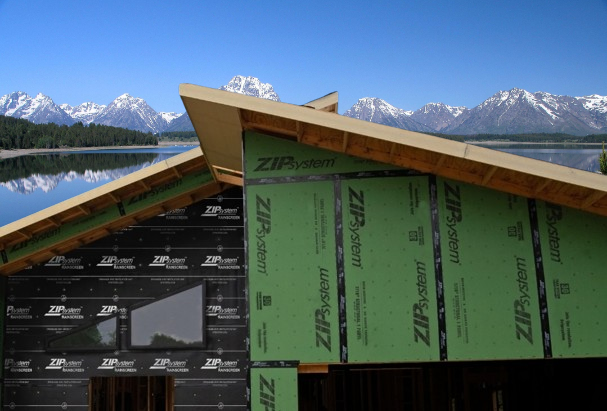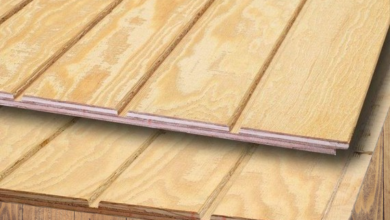Siding Over ZIP System Installation

The ZIP system has facilitated simpler, more intelligent, and more effective construction since its introduction in 2006. With this cutting-edge wall and roof system, house wrap is not necessary.
All that’s left to do is put the boards in place and seal the seams. I won’t go into too much detail because I’m sure you are aware of the many distinctive aspects of the ZIP system.
However, I’ll be assisting you today in learning how to install siding over a ZIP system.
Is It Possible To Install Siding Over A ZIP System?
Siding can be installed over the ZIP system, yes. Examining this sheathing, you will see that it has a wooden structural panel that serves as an appropriate nail base for siding.
Please be aware that siding that needs to be nailed into the studs or framing cannot be accommodated by the ZIP system. The effectiveness and performance of the ZIP system sheathing may be impacted by such sidings.
In summary, siding is able to be installed over a ZIP system. But there are a few things you should be aware of.
Which Siding Types Are Acceptable Above The ZIP System?
Initially, a variety of siding materials are compatible with the ZIP system. I’ll outline the most common siding choices that you can choose from over the ZIP code below;
- Vinyl Siding: Vinyl siding is a common feature on over 60% of ZIP systems due to its attractive appearance. Vinyl siding is very reasonably priced and requires little maintenance. Additionally, vinyl doesn’t exert much pressure on the ZIP sheathing because it is lightweight.
- Wood Siding: Due to its distinct aesthetic appeal, wood siding is a popular choice among homeowners. While wood siding is compatible with the ZIP system, it must be protected from moisture damage.
- Stucco: Due to its ageless and elegant style, this conventional siding material will never go out of style. It can also be applied over the ZIP system as siding. Please be aware that applying stucco over a ZIP system will require the use of a metal lath.
- Fiber Cement Siding: Due to its affordability and longevity, fiber cement siding has recently gained popularity among homeowners. It works well as siding for ZIP systems as well.
These are just a few of the siding options that are most widely used across the ZIP code. However, there are numerous others, like brick and stone veneer.
A stable surface for siding installation is one of the benefits of a ZIP system. It works well with a wide variety of siding materials because of this.
How Is A ZIP System Siding Installed?
Let’s walk through the installation procedure now that you are aware that siding can be installed over a ZIP system.
Since various siding types can be installed over a ZIP system and each has a different installation procedure, the following guide will be general in nature.
- Step 1: Verify Proper Installation of the ZIP System
Verify that the ZIP system is installed correctly before proceeding with siding installation. All joints should be sealed with tape, as leaving any gaps could result in failure.
- Step 2: Continue Installing Flashing Next To Windows
In case you’re unaware, flashing refers to the installation of metallic or plastic materials inside walls with the purpose of collecting and directing water towards drainage points. In a setup like this, flashing is essential near windows and doors.
- Step 3: Install Siding in Compliance With Manufacturer’s Guidelines
It’s now time to install siding after completing the aforementioned tasks. You have to do this step by following the manufacturer’s instructions.
For example, you should install a metal lath over the board first when installing stucco siding. To start with vinyl siding, you can make a smooth surface by fastening furring strips.
After that, you can use screws or nails to secure the siding over the ZIP system.
The Advantages Of Opting Out Of The ZIP System
What makes siding the best option among all ZIP sheathing coverings? There are a few explanations that come to mind:
- Siding enhances the aesthetics of your ZIP system. The ZIP sheathing boards have perfect performance, but their appearance belies their superior quality. You can therefore add siding to your residential or commercial property to give it a more attractive finish.
- There are many siding materials that work with the ZIP system. This therefore offers you a great deal of freedom in selecting the ideal material for you.
- Siding increases the ZIP system’s structural durability. Siding strengthens your walls when combined.
- Certain siding materials enhance the ZIP system’s energy efficiency. You will thus benefit from improved sound and thermal insulation.
- Siding contributes to the air and moisture resistance of the ZIP system. You can be sure that the siding installed over the ZIP system will provide superior air and moisture protection.
Do Siding Fasteners Have Permission To Compress The ZIP System?
Recall that I mentioned sidings that need to be fastened to wall studs or framing cannot be installed using the ZIP system. I would like you to stay away from this, though.
The structural integrity of the ZIP system is compromised when a fastener is driven through the wooden panel, causing the sheathing to compress and puncture.
There is an air and water barrier inside a ZIP system. The boards will allow air and water to pass through if it is punctured, defeating the original intent of using such a sheathing.
Please do not compress the ZIP system when installing siding over it. It is important to take the fasteners’ length into account.
They shouldn’t protrude past the sheathing’s breaking point. They also shouldn’t be too short and unable to support the siding.
What Difficulties Could Come Up With Siding Over The ZIP System?
Siding over the ZIP system is typically an easy process. There are a few difficulties, though, that you might encounter, like;
- Overpressurizing the ZIP system with fasteners: This frequently reduces the sheathing’s resistance to air and water.
- Trapping moisture between siding and sheathing: For this reason, placing a moisture barrier between siding and the ZIP system is a smart idea.
Certain sidings are porous, such as stucco. Water may therefore become trapped when it passes through and cause problems like the growth of mold.
- Failing to install flashing around windows: Flashing keeps water from becoming trapped between the ZIP system and siding.
- Improper ZIP system installation: If you fail to tape the system’s seams or make any mistakes when installing it, these issues may arise much later and compromise the functionality of your siding.
Is Hiring A Contractor Necessary When Installing Siding Over A ZIP System?
Both yes and no are the answers to this query. To begin with, the ZIP system is widely recognized for its ease of installation. The same holds true for vinyl siding, among other siding options.
You can therefore try installing siding over the ZIP system yourself if you have some experience doing do-it-yourself projects. However, I would suggest leaving this to the professionals if you have little experience installing siding and sheathing.
Hiring a contractor to install siding over the ZIP system has more benefits than doing it yourself. You can be sure that a licensed contractor will complete the work correctly and with professionalism.
Additionally, this method guarantees adherence to building codes. If your project is complex, consulting with an expert is also advised.

